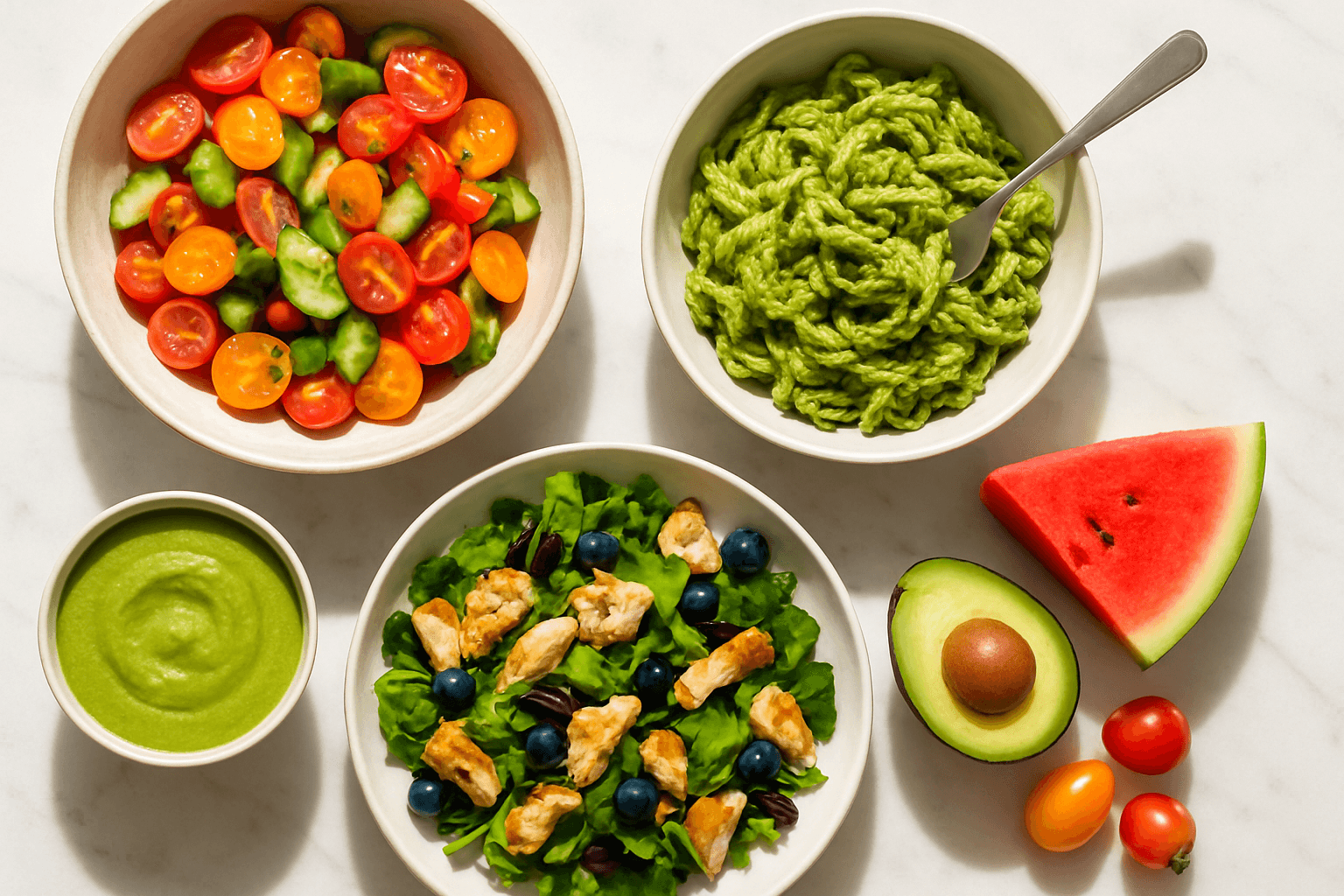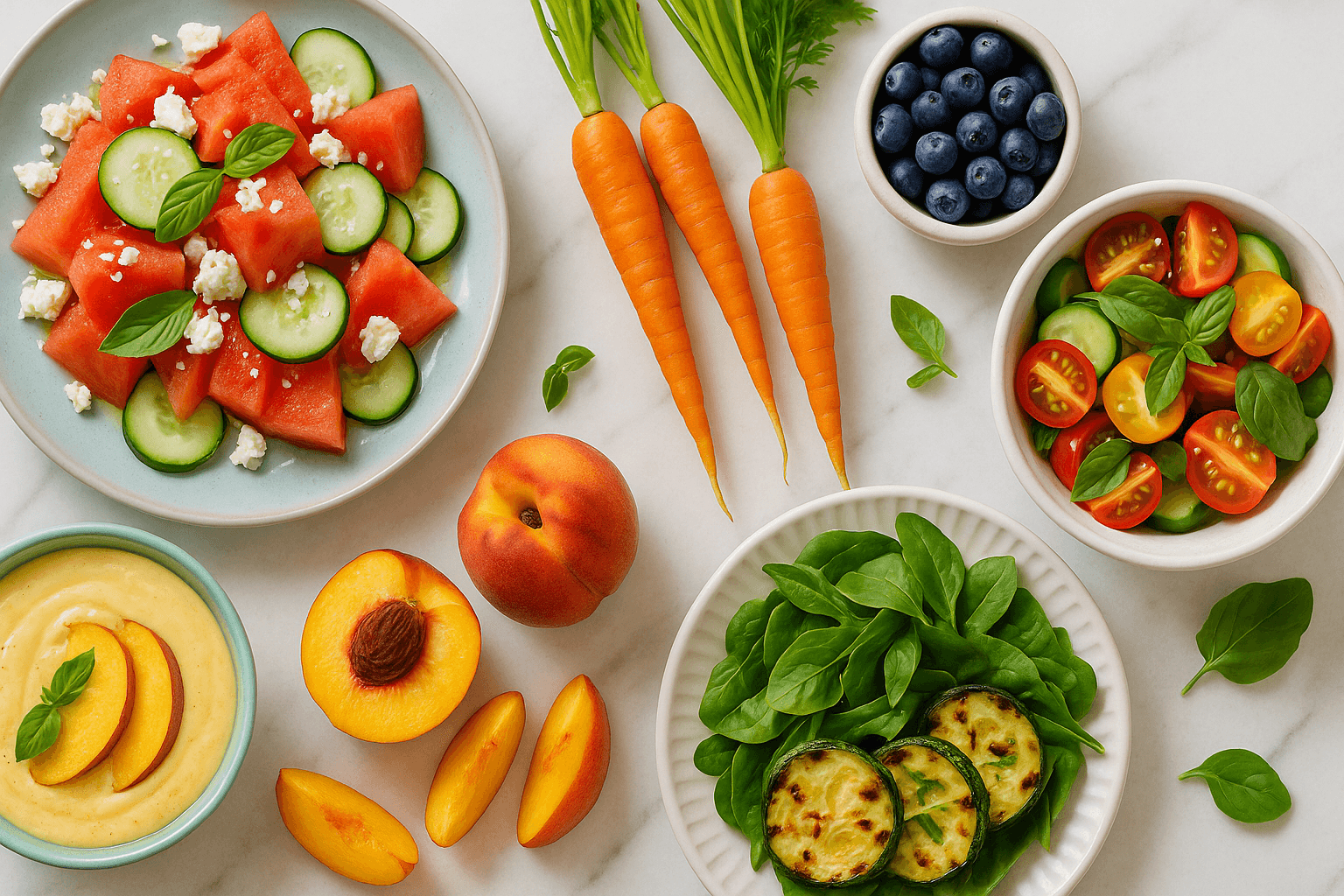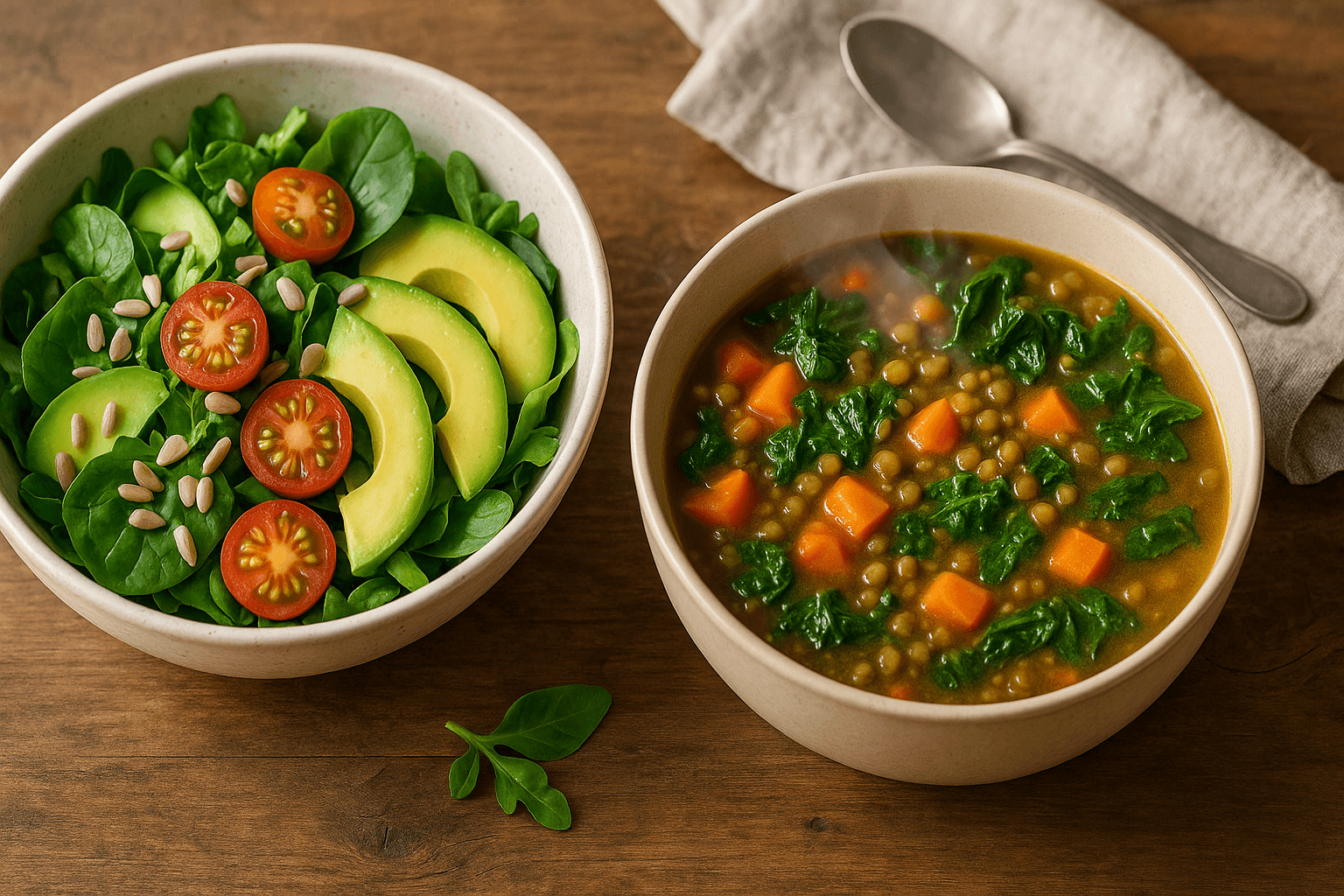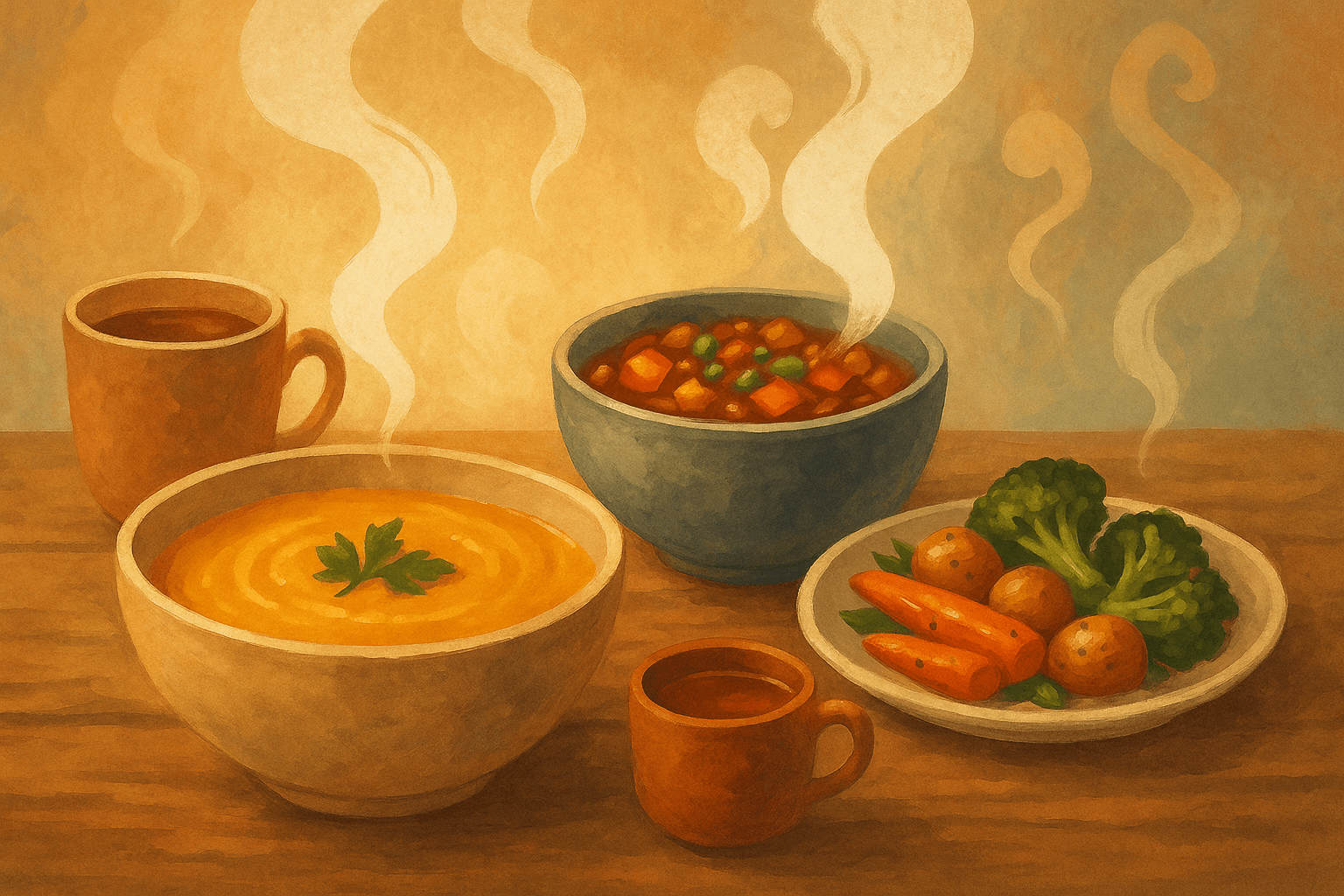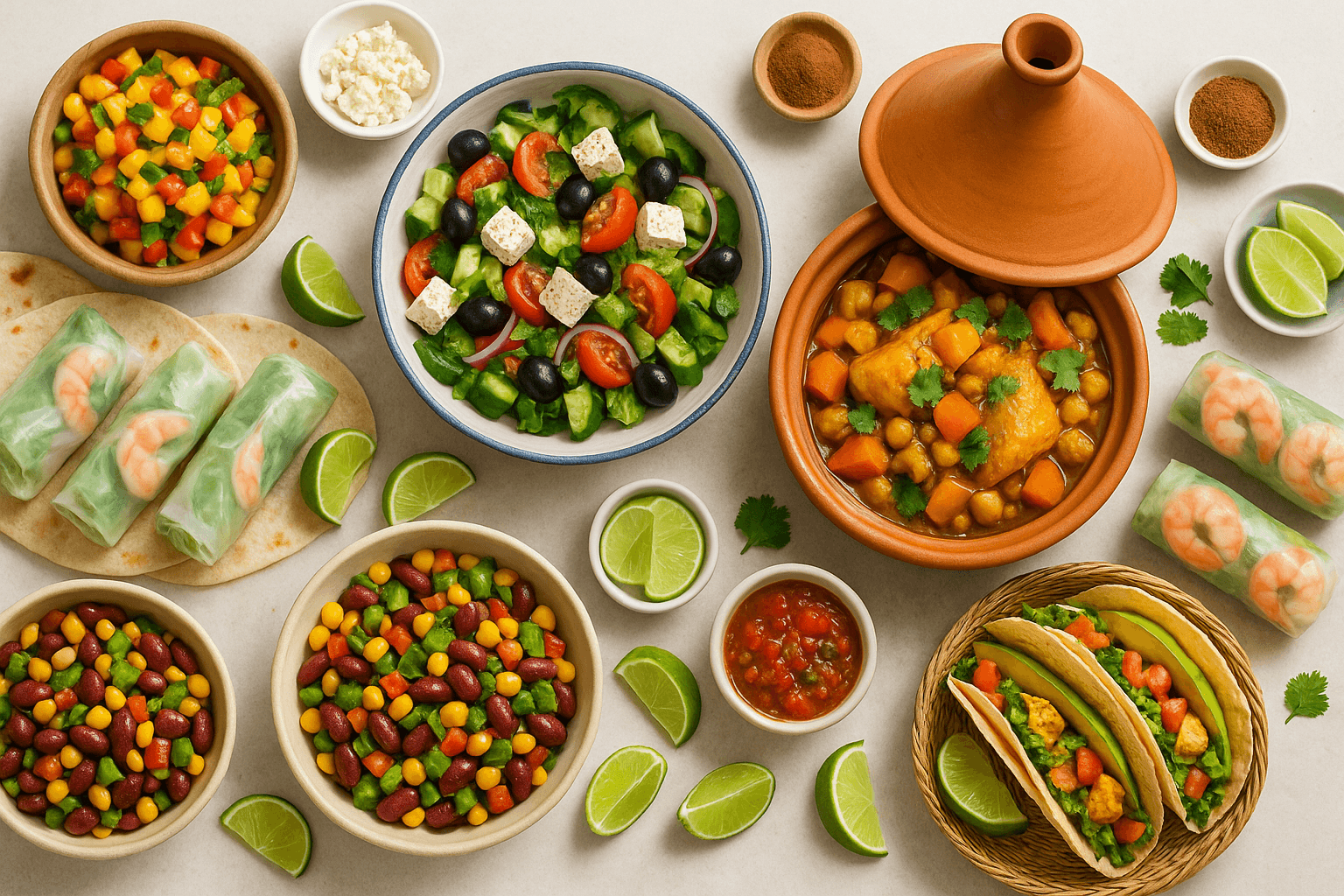Flavor First: Healthy Recipes That Actually Taste Good
Published on August 26, 2025

Let’s be honest—when someone says "healthy recipe," the first image that flashes into most people’s minds is a dry chicken breast, a sad pile of steamed broccoli, or a grayish bowl of something that tastes like regret. But what if I told you that healthy meals could explode with flavor, satisfy your cravings, and support your health goals all at once? Welcome to the world of Flavor-First Healthy Recipes —where nutrition meets pleasure, and wellness doesn’t come at the cost of your taste buds. This comprehensive guide isn’t just another list of low-calorie meals. It’s a deep dive into how you can turn whole foods into whole-hearted meals using smart nutrition principles drawn from leading textbooks like Modern Nutrition in Health and Disease, Essentials of Human Nutrition, and Eat, Drink, and Be Healthy.
Rethinking “Healthy” — Where Most Recipes Go Wrong Why do so many healthy recipes taste bland? Because they often strip away fat, salt, and sugar without adding anything back to balance flavor. They become formulas of what not to eat—devoid of soul, heritage, and creativity. But food isn’t just fuel. It’s culture, comfort, connection. And you don’t need to sacrifice flavor to support your health.
The Flavor-First Philosophy means:
- Choosing whole, nutrient-rich ingredients
- Layering herbs, spices, acid, and umami to maximize taste
- Using smart fats (like olive oil, nuts, and seeds)
- Building meals that are as beautiful as they are balanced
The Science of Flavor Meets Nutritional Wisdom According to Modern Nutrition in Health and Disease, flavor plays a huge role in dietary adherence. People are more likely to stick with healthy eating habits if meals actually taste good. Makes sense, right?
So how do we make healthy food craveable?1. Balance all five tastes: _Sweet: _roasted carrots, balsamic glaze, fruit Sour: citrus, vinegar, fermented veggies Salty: olives, feta, miso, sea salt (in moderation) _Bitter: _arugula, kale, dark chocolate _Umami: _mushrooms, tomatoes, tamari, parmesan 2. Optimize texture: Crunchy nuts + creamy hummus = magic Crisp vegetables + warm grains = satisfaction **3. Use herbs and spices with intention: **From anti-inflammatory turmeric to metabolism-boosting chili, herbs and spices add both flavor and function.
The Pantry of a Healthy Home Cook Your pantry is your foundation. Build it with intention: Oils & Acids: Extra virgin olive oil Avocado oil Balsamic vinegar, apple cider vinegar, rice vinegar Fresh lemons and limes Spices & Seasonings: Garlic powder, onion powder, cumin, coriander Chili flakes, turmeric, paprika, black pepper Dried oregano, thyme, rosemary Flavor Boosters: Tamari or low-sodium soy sauce Dijon mustard Nutritional yeast Tahini Tomato paste Protein Staples: Canned beans (black beans, chickpeas, lentils) Canned wild salmon, tuna Frozen edamame Tofu, tempeh Whole Grains: Quinoa, farro, brown rice, bulgur Steel-cut oats Nuts & Seeds: Almonds, walnuts, pumpkin seeds, chia seeds, flaxseeds
Must-Try Recipes That Are as Healthy as They Are Delicious
- 🥗 Mediterranean Chickpea Power Bowl Why it works: High in fiber, healthy fats, and plant protein Flavor notes: Lemon-tahini dressing + cumin-spiced chickpeas + fresh herbs
- 🍜 Spicy Peanut Soba Noodles with Veggies Why it works: Whole-grain carbs + colorful veg + heart-healthy fats Flavor notes: Ginger, garlic, lime, and crunchy peanuts
- 🍳** Sweet Potato & Kale Breakfast Hash** Why it works: High in fiber and antioxidants; blood-sugar stable Flavor notes: Smoked paprika, caramelized onions, and runny egg
- 🐟** Miso-Glazed Salmon with Sesame Broccoli** Why it works: Omega-3-rich protein + cruciferous cancer-fighting veg Flavor notes: Sweet-savory umami glaze
- 🌮 Black Bean & Mango Tacos with Avocado Crema Why it works: Anti-inflammatory, gluten-free, rich in plant nutrients Flavor notes: Sweet mango, creamy avocado, and chili-lime crunch
- 🥣 Golden Lentil Soup with Coconut & Turmeric Why it works: Immune-boosting, gut-friendly, and deeply comforting Flavor notes: Warming spices + creamy coconut milk
- 🍓 Dark Chocolate Chia Pudding with Berries Why it works: Rich in fiber, antioxidants, and healthy fats Flavor notes: Decadent cocoa + tart berries + vanilla
Meal Planning for Flavor and Function Healthy eating becomes effortless when it’s planned. Here’s how to build a week of flavor-packed meals:
- Batch cook grains on Sunday (quinoa, brown rice, oats)
- Prep proteins (roast chickpeas, bake salmon, grill chicken, marinate tofu)
- Chop veggies and store in glass containers
- Make 2 sauces that double as dressings (e.g., tahini-lemon and avocado-cilantro)
Example Weekly Meal Flow:
- Monday: Mediterranean Chickpea Bowl
- Tuesday: Soba Noodles with Peanut Sauce
- Wednesday: Miso Salmon with Broccoli
- Thursday: Sweet Potato Hash
- Friday: Black Bean Tacos
- Saturday: Lentil Soup
- Sunday: Leftover Remix + Chia Pudding
The Psychology of Flavor and Why It Matters Studies in Essentials of Human Nutrition show that food preference is shaped by experience, exposure, and pleasure—not just necessity. When meals are enjoyable, we form healthier relationships with food.
Tips for psychological satisfaction:
- Make meals visually appealing (color = health + happiness)
- Eat mindfully (no scrolling, no rushing)
- Share meals with others—community is nourishing
- Include a variety of flavors in every meal
Red Flags in “Healthy” Recipes to Watch Out For Not all "healthy" recipes are actually health-promoting. Watch for:
- Overuse of sugar-free substitutes (can spike cravings)
- Lack of protein and healthy fat (you’ll feel hungry in an hour)
- Excessive sodium (common in sauces and dressings)
- Very low-calorie recipes (can slow metabolism and sabotage satiety)
Always ask: “Would I want to eat this again next week?” If the answer is no—it’s not sustainable.
Recipes Rooted in Culture and Connection We eat with our histories. Healthy food can (and should) reflect your traditions.
Whether it’s:
- Moroccan spiced lentils
- Thai green curry
- Italian minestrone
- Mexican elote-style grilled corn
- Indian chana masala —There’s always a way to elevate traditional dishes with mindful tweaks that preserve culture and enhance health.
What the Research Really Says According to findings across Modern Nutrition in Health and Disease, flavor perception impacts nutrient bioavailability, appetite regulation, and even digestive hormone response. That means:
- You absorb more nutrients when you enjoy your food
- Balanced flavors may help regulate appetite
- Pleasant eating experiences may improve digestion and reduce stress
Conclusion: Flavor is the Future of Healthy Eating Forget punishment plates. Healthy food should be something you crave, not something you choke down. When you prioritize flavor, you create a path of joy and sustainability in your health journey. You don’t need to choose between delicious and nutritious—you can have both, every single day.
So grab your spices, sharpen your knives, and get cooking. Your body—and your taste buds—deserve it.



